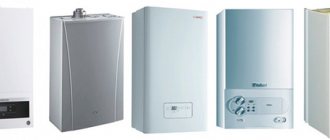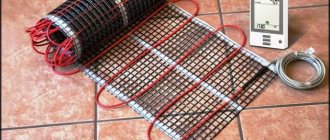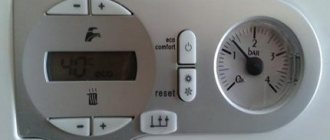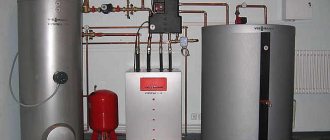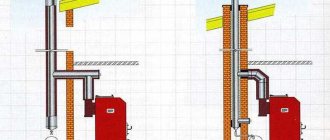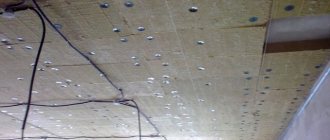Straight radiator valve.
A manual valve for radiators is a pipeline fitting whose main task is to regulate the flow of coolant. By changing the volume of hot water supplied to the radiator, the room temperature can be adjusted using a manual valve. This device allows you to save the consumption of consumed thermal energy by reducing the operating time of the heating system at full power.
Purpose and range of shut-off valves
For heat supply systems, this fitting is used to control the supply of hot coolant and open the heating circuit.
As a rule, a shut-off valve on a heating device is mounted in areas where radiators are piped. In addition to functional advantages, such a solution has practical benefits. After closing the shut-off valve of the battery, the home craftsman will have the opportunity to repair it without stopping the functioning of the entire heating structure.
Today, shut-off valves for heating are offered in a wide range on the domestic market, and among the most commonly used products are the following devices:
- shut-off valves;
- valves;
- needle valves;
- Ball Valves.
What is an Angle Stop Valve
They differ from each other, first of all, in their operating principle. Now we are interested in the principle of operation of the corner valve. The valve shut-off element rotates on a spindle. When the spindle rotates, a forward-return movement of the lock occurs, which simply blocks the flow.
The angle valve blocks the flow gradually, that is, it is a smooth adjustment device. When using a valve, the flow can be opened as much as necessary in a particular case.
The corner valve is a valve that is familiar to each of us since childhood. They are mainly installed in apartments on water faucets. Angle valves are also used in heating systems.
They are often used on pipe bends when heating pipes transition to a heating device. In this case, you can also connect a temperature control sensor to the valve. In this case, the valve is driven electronically.
When the required temperature level changes, the sensor sends a signal to the valve to change the level of water flow into the device and thereby change the temperature. They can be of various types: with a built-in or remote sensor, with remote control and other functions.
As the pressure increases and the pipe turns sharply, the valve can simply be knocked out by the pressure. In addition, angle valves are available in small diameters.
Thus, the angle valve has the following characteristics:
- features smooth adjustment;
- used at low blood pressure;
- differs in a variety of areas of application.
An angle valve is a durable part of the fittings if properly maintained. Since the flow shutoff is sealed when the shut-off element enters the pipe, the seals or O-rings wear out quite quickly.
Therefore, to maintain the operating condition of the valve, it is necessary to periodically change these rings. This ensures high quality of operation and smooth operation of the valve.
Use only the highest quality materials to create a sewage system in your apartment. This will save you a lot of time, money and nerves. You can, of course, not listen to this, then, most likely, you will have to listen to the “singing” at night. your pipes.
Features of installation and operation
- The valve can be installed in a vertical or horizontal position.
- First of all, the half-grip pipe is connected to the system (before installing it, the integrity of the O-ring is checked). Coupled manual valves for radiators are installed with the mandatory use of fluoroplastic seals. Installation and fastening of the pipe is possible using a special wrench. (The use of lever wrenches is strictly prohibited.)
- Before disassembling the shut-off and control manual valve, the coolant is drained.
- Before installation and operation, you must familiarize yourself with the rules for using the fittings, because Each type of device has special technical limitations and features.
Types of battery taps
Designed for installation on a battery
:
- shut-off valves for radiators (half-turn ball valves);
- air release valves (manual Mayevsky valve, automatic air vents);
- balancing valves for radiators;
- control valves equipped with thermal heads (thermostatic valves);
- taps for draining coolant.
To decide which taps to install on heating radiators, you need to understand the operating principles and purpose of each device.
Mayevsky crane
This is a manual air valve for a heating radiator, which allows you to remove air pockets from the radiators. Instead of a mechanical Mayevsky faucet, it is possible to install an automatic air vent, but these products do not look as aesthetically pleasing.
The Mayevsky tap consists of a polymer body into which a threaded washer is soldered into a through cone-shaped hole. From the outside, a cone of appropriate dimensions, also equipped with a thread, is screwed into the washer. To screw in and unscrew the cone, there is a recess for a screwdriver or a special key, which is included in the product package.
Schematic representation of the Mayevsky crane
There is also a plastic washer on the body with a hole through which air is released. To do this, insert a screwdriver or key into the recess and turn the cone one turn. When water begins to flow from the hole, the shut-off cone is screwed back in all the way.
Important! It is recommended to install the valve with a recess for a screwdriver, as the key may get lost. Under no circumstances should you unscrew the shut-off cone completely - the pressure in the system will not allow you to install it back
Ball valves: types and parameters
When installing each radiator, it is advisable to install two ball valves or a ball valve for the supply and an adjustment valve for the return. Ball valves are shut-off valves that allow you to shut off the flow of coolant and dismantle radiators without draining the coolant from the entire system.
Ball valve device
The key element of the device is a steel ball with a hole for the coolant to pass through. The ball is fixed to the rod, and when the handle is turned 90 degrees, it turns and completely blocks the flow of the medium.
Ball valves vary
:
- according to the body material (brass, silumin, polypropylene);
- by design (straight and angular);
- in terms of throughput (for full-bore ones, the hole in the ball practically coincides with the diameter of the pipe, for standard ones it is 70-80% of this indicator).
When considering which taps are best installed on radiators, preference should be given to full-bore ones, since they do not reduce the permeability of the system and do not reduce the heat transfer of heating devices.
Valves with thermal heads
The thermostatic valve for a heating radiator makes it possible to control the temperature in the room. Depending on the model, the thermal head is adjusted to a certain temperature manually, or the operation of the valve is flexibly regulated by an automatic device. Under the influence of the thermal head, the valve stem moves, changing its flow area.
Valve with thermal head
If the installed thermal valve does not have the function of blocking the coolant flow, it is additionally required to install a shut-off valve in order to fully service the battery.
Flushing taps
The flush valve on the radiator is designed to drain the coolant while flushing the system. The design of the welded flushing valve includes a metal body, a rubber gasket and a long stem. To open such a tap, use a gas key or pliers.
This device has a significant drawback - the rubber gasket is easily destroyed during operation of the crane, which leads to an emergency. Instead of a welded flush valve, it is recommended to install a radiator plug or an adapter with a plug valve on the radiator.
Balancing valve
The balancing valve for heating makes it possible to adjust the temperature conditions of the heating circuits. If the radiator is not equipped with a thermostatic valve, use a mechanical tuning valve, the diameter of which is manually set based on the pressure readings in the pipeline in the sections before and after the valve.
In systems where the battery temperature is adjusted using thermostatic valves, an automatic control valve is responsible for balancing the pressure. The balancing control valve is mounted on the return pipe.
Operating principle and types of structures
Radiator control valve design.
The standard brass body (1) is produced by cold or hot stamping. The flow is regulated by turning the handle (10), the rod (4) is attached to the valve coupling. As a result of turning the handle, the cylindrical gate moves; as it moves, the volume of water passing through the round hole of the adjustment plug (2) changes.
The shut-off and control manual valve has a semi-slide, thanks to which the structure can be repaired in the event of problems. Installation and removal of fittings is possible without dismantling the rest of the heating system, which also makes it possible to repair radiators without changing the valve.
Valtec manual control angle valve.
Note! Based on their ability to change the direction of flow, valves are divided into passing and angular. For straight-through valves, the pipes are located on the same axis or parallel. On corner ones, the outlet and inlet pipes are located mutually perpendicular.
In turn, both straight-through and angle valves are manufactured in various diameters (1/2 or ¾), for side and bottom connections, and can have standard and increased capacity.
If the name of a manual radiator valve contains the word “adjustment”, this indicates that the position of the valve can be fixed during installation and possible restrictions on subsequent settings. Double adjustment valves completely eliminate user actions after installation (adjustment is only possible on a dry riser).
Angle valve.
Depending on the type of connection, the valves are either coupling or flange. Couplings provide more reliable mounting of the device on the radiator. For installation in heating systems with plastic pipes, control valve designs with a polypropylene body are used.
Definitions
Let's start getting acquainted with the design of thermostatic equipment, moving from simple concepts to more complex ones.
Thermostat
This is a general name for all devices capable of maintaining a stable temperature of any environment under changing external conditions.
In relation to heating, a thermostat is understood as a control valve capable of ensuring a constant air temperature in the room when changing:
- weather conditions and, accordingly, heat loss through the building envelope;
- coolant temperature.
Thermostatic valve
The thermostatic radiator valve solves the problem of stabilizing the temperature in the room in the simplest and most obvious way - by limiting the flow of coolant through the heating device. The less water or antifreeze passes through the battery per unit of time, the colder it is; the more, the more its heat transfer increases.
What is the working principle of a thermostatic radiator valve? The vast majority of devices in the lower and middle price categories use the expansion of liquids and gases when heated and the reduction of their volume when cooled.
Thermostatic valve device.
When the contents of the bellows heat up, it lengthens and forces the valve against the seat, thereby limiting the coolant flow. Some time passes, and due to the decreased heat output of the heating device, the air in the room becomes colder. Compression of the working medium leads to a decrease in the length of the bellows; the opened valve allows the coolant to warm up the battery again.
Straight thermostatic valve for radiator 1:2 inches in diameter.
A more complex and expensive version of the thermostatic valve is an electric drive with digital control, which is carried out based on the analysis of data from a built-in or remote thermocouple.
Thermal head
Strictly speaking, a thermostatic head for radiators is a simple device for manually adjusting the valve position of a thermostatic valve. By rotating its handle, you can set the target temperature in the room, which will then be maintained automatically.
Head and valve.
Thermostatic kit
A typical heating device piping includes a certain gentleman's minimum, which allows you to flexibly regulate its heat output. The set includes:
| Device | Functions |
| Throttle or thermal head with thermostatic valve | Manual or automated adjustment of the supply permeability to maintain optimal room temperature |
| Shut-off valve | Complete shutdown of coolant supply to the radiator for its repair, replacement or temporary dismantling |
In some cases, the valve on one of the threads can be replaced with a check valve that stops the supply of coolant during counterflow (read: water is being discharged from the battery), or an additional throttle. In this case, the throttle provides preliminary balancing of the heating device (adjusting the permeability to equalize the temperatures of near and far heating devices).
A thermostatic kit is a set of shut-off valves from one manufacturer, including at least a thermostatic valve and a thermal head; More often, the kit additionally includes a balancing throttle.
In addition, the package can be supplemented with:
- radiator plugs;
- American ones for quick-connection of the radiator (they can be a separate element of the fittings or be part of thermostatic valves);
- Brackets for mounting the battery.
The price of a kit from a decent manufacturer starts from about 1000 rubles; the upper limit is 3 - 5 thousand, depending on the brand level and configuration.
Set of throttle, thermostatic valve and head for it.
We understand the types of devices
According to the method of adjustment, valves are divided into mechanical and automatic . The first require manual rotation of the mechanism for narrowing the flow in the pipes.
Both devices perform the same function - they adjust the flow of coolant to the radiator in accordance with the parameters set by the user, but using automation is less troublesome
Automatic models do not require manual adjustment. When the temperature around the thermostat decreases, they independently detect this and adjust the coolant flow.
Manufacturers also offer different thermostat designs:
- Common for two-pipe systems - the simplest device. If you need hydraulic linking of radiators along one branch, it is recommended to add a shut-off and control valve to the supply (return) circuit.
- With hidden and open hydraulic superstructure - such devices have a coupling with an internal rod, so hydraulic adjustment is possible.
- For single-pipe, gravity systems - due to the increased passage, the throughput of these devices is increased to 5.1 m3/hour, so they can be installed in non-pressure systems.
- 3-way for circuits with bypass - they can regulate and distribute the coolant in conjunction with the bypass. When the set temperature reaches the valve, the coolant is sent to the bypass; when it drops, the bypass is partially closed.
The percentage of thermal valves for two pipes is much greater than for single pipes, and the latter in our country are about 80%.
This is due to the fact that the device was originally invented for the former, where the coolant is distributed among the devices forcibly under high pressure. Pre-setting by valves is designed to distribute pressure evenly throughout the system.
Only some manufacturers have valves for single pipes - Heiz, Danfoss, Heimeier, Oventrop.
In single-pipe schemes, you cannot use conventional “two-pipe” thermostats : they have a lower capacity, they can only operate with a large difference in pressure between the supply and return, so there will be a risk of redirecting the coolant to the bypass.
Externally, “one-pipe” valves are larger in size.
Three-way valves are appropriate in circuits with a solid fuel boiler, as well as for flow separation and bypass piping of radiators. The device can also be used in single-pipe installations
Thermostatic valves also differ in shape. They can be straight, angular or included in sets with jumpers for pipes. Direct ones are suitable for regular batteries. Angular ones are needed in schemes with lower pipe connections, when the CO is partially disguised under the floor.
A separate type of thermal valves is electronic. They have wider functionality than regular ones. With their help, you can set different room temperatures for each day of the week and even hourly.
Electronic thermal heads are more expensive and larger than usual: inside the case there is a compartment for two batteries. There are models with removable and built-in control units
Electronic thermostats provide significant savings in coolant consumption. If there is no one in the apartment or house from 8 am to 6 pm, the device will properly maintain the minimum temperature. And when the owners arrive, it will heat the premises to a comfortable level.
Valves with anti-vandal casing are also available for sale. They are reliably protected from unqualified intervention and are suitable for installation both in a home with small children, and in kindergartens and schools.
Types of locking mechanism
According to the type of constipation, all water valves and taps are divided into two types:
- Valve;
- Ball;
- Cork.
Below we will take a closer look at the features of all types of these devices.
Valve
Valve taps are locking mechanisms familiar to everyone. The principle of their operation is based on blocking the passage with an elastic gasket mounted on the rod. The position of the rod is adjusted by a handwheel using a worm mechanism.
So, when the handle is rotated, the rod rises, as a result of which the passage for water opens.
Among the advantages of this mechanism it is possible to highlight:
- Ability to withstand high pressure;
- Ability to manage the flow;
- Ease of Management;
- Possibility of repair.
Along with the advantages, these products also have some disadvantages:
The gasket quickly fails because it comes into contact not only with water, but also with the iron surface. Indeed, it is possible to replace it yourself. In most cases, the device kit includes an assembly drawing of the water valve, which demonstrates how to disassemble the mechanism and replace broken parts.
- To completely open or block the passage, you need to make a couple of turns with the flywheel yourself, which is not very comfortable.
- The mechanism is less durable than other types of fittings.
Due to these circumstances, recently such taps are installed quite rarely, only in those cases when it is necessary to regulate the flow.
Ball
Ball water valves have recently become the most common. They took this name due to the fact that the locking mechanism is made in the shape of a ball with a through hole. To block the flow, the ball is rotated with its hole perpendicular to the pipeline.
The plumbing ball valve has a number of advantages, such as:
- Durability due to the simplicity of the mechanism;
- Tightness when the passage is closed;
- To open the passage, you need to rotate the handle only 90 degrees;
- Affordable price;
- Possibility of use in conjunction with servos and other devices that allow you to control the mechanism remotely or install it in automatic flow shut-off systems. (See also the article How to choose a faucet: highlights.)
As for the shortcomings, there are few of them:
- The operating instructions for the device imply its use only for completely blocking or opening a passage, i.e. it cannot be used to regulate flow. Otherwise, the mechanism will quickly depressurize.
- If the mechanism fails, it cannot be repaired.
This type of fittings is used much more often in plumbing systems.
Cork
The design of a plug-type water valve resembles a valve valve, the only thing is that the flow is shut off using a conical plug, which is attached to the stem. When the rod is lowered, the plug enters the hole and closes the passage well.
It should be emphasized that in water supply systems such fittings have recently been used very rarely, since more durable ball valves are installed instead.
Types of pipeline fittings
Reinforcement products are classified according to method of application, purpose, design. The types of fittings on pipelines are as follows:
- flanged;
- connecting;
- for pipes made of different materials;
- for nuclear power plants.
Let's take a closer look at these types.
Flanged
A flange is a flat disk with a certain number of mounting holes. The flanges of adjacent elements fit tightly to each other. The connection is made by tightening the fastening bolts with nuts. Gaskets ensure tightness. Flange fittings are installed in systems operating at different pressures and temperatures. The flange is welded to the pipe.
The flange connection is dismountable, which simplifies repair work, inspection and replacement of elements. It is made of cast iron or steel, is used for pipelines from 50 mm in diameter, can withstand temperatures up to 400 C, and can be placed in horizontal and vertical positions.
Connective
Pipeline connecting fittings are used when connecting elements made of different materials and diameters. At the point of joining of pipes made of steel and plastic, where the diameters of the elements being connected are different, connecting fittings are used.
Couplings, plugs and other fittings are installed as additional parts, the design of which does not have a locking and adjusting mechanism. Such elements ensure quick installation and replacement of pipeline parts. Connecting elements are produced with a cross section of 25-2020 mm, for pressure from 1 to 4 MPa, from cast iron, steel, and plastic.
Stainless
Stainless steel pipe fittings form a connection that does not react chemically with the working environment, which ensures the longevity of the system. Elements such as valves, taps, adapters, gate valves are used for stainless pipelines when transporting food liquids, alcoholic and non-alcoholic drinks.
Stainless steel elements form a strong connection that is resistant to corrosion and aggressive environments, which ensures its use in the petrochemical and gas industries, pharmacology, and nuclear power plants. The parts do not interact with the transported products and do not change its structure.
Valves for nuclear power plants
A nuclear power plant is a high-risk energy facility. Its design includes a large number of pipelines, and industrial pipeline fittings are installed. The following requirements apply to the elements:
- The direction of movement of the working fluid must coincide with the arrow on the body.
- Do not use parts that are not suitable for their intended purpose.
- Access to all types of fittings must be free.
- Cover the connecting elements of the pipeline that are heated during operation with a removable structure with thermal insulation, secured with threads.
Separate parts of a pipeline under high or medium pressure are connected by welding or flange fittings, which reduces the possibility of leaks. The material for the products must be high-quality metals.
Important: to ensure the safe operation of steam generators, safety valves are installed - main and auxiliary. To remove drainage from the station circuit, first install a shut-off valve, then an adjustment valve.
Metal-plastic pipe fittings
Metal-plastic pipes are used for installation indoors. This is internal plumbing and heating. The sections are connected by valves, shut-off and transition valves and other elements. They are used at coolant temperatures up to 95 C and pressure 16 atm.
Pipelines made of metal-plastic are used in everyday life, have a neat appearance, and have a threaded or pressed connection. The fittings are made of nickel-plated brass. The products have standard sizes and are marked on their surfaces.
Fittings for polyethylene and polypropylene pipes
Fittings for plastic pipes are distinguished for pressure and non-pressure systems. For polyethylene pipes, a welded connection is considered the most reliable. As a result, we get a single cast sealed pipe.
American: what is it, a fitting for connecting pipes A device used to combine individual elements of pipelines into a single circuit, consisting of a union nut and threaded bushings, is called an American fitting among plumbers. Used in…
To regulate the flow and divide it into separate parts, taps, dampers and valves are used that can withstand pressures of up to 16 atm and temperatures from 45 to 80 C. Brass, bronze, and steel fittings are used.
For water supply, it is permissible to install polyethylene taps with a metal insert. Date: September 25, 2022

